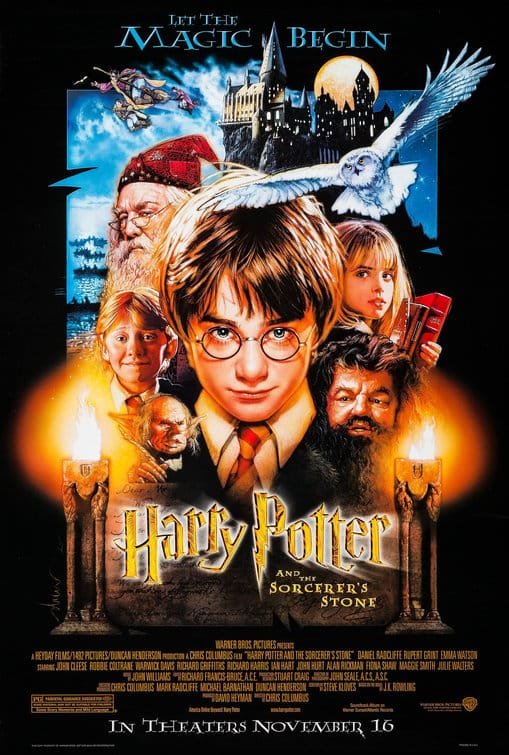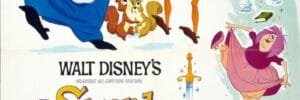A boy named Harry Potter (Radcliffe) learns on his 11th birthday that he is the orphaned son of two powerful wizards and possesses unique magical powers of his own. Invited to attend Hogwarts School of Witchcraft and Wizardry, Harry meets Ron Weasley (Grint) and Hermione Granger (Watson), and the three set out to uncover what’s being kept on the third floor.
- Based on Harry Potter and the Sorcerer's Stone by J.K. Rowling.
After reading the first books in this wildly popular series by J.K. Rowling, I was as excited as everyone else hearing that they were making a film series. So, when I was asked if I wanted to see Harry Potter and the Sorcerer’s Stone in theaters, I said okay – and remember being disappointed. But what caused my disappointment – and would it still be evident over 20 years later?
Daniel Radcliffe takes on the role of Harry Potter, and in this first film, he’s obviously pretty untrained in acting. He’s not able to do much, and has to rely on the rest of the cast – including fellow child actors Emma Watson and Rupert Grint – to help him through it. Obviously, acting didn’t come as easy to him as it did to Grint and Watson. He’s not alone in that respect, as Matthew Lewis (Neville) and Tom Felton (Draco) aren’t quite up to par yet either – but since the focus is on Harry, it’s much more obvious in his case.
The rest of the adult cast in Harry Potter and the Sorcerer’s Stone, however, are (mostly) outstanding. Whether it’s Richard Harris as Dumbledore, Maggie Smith as McGonagall, Alan Rickman as Snape, Robbie Coltrana as Hagrid, or David Bradley as Filch, they bring their characters to life so well it’s like Rowling was writing about them in these roles. The one exception is Ian Hart as Quirrell, who doesn’t seem to be on the same level as the others (maybe he played down to Radcliffe’s level in this early film).
All the main elements of the story from the book are in Harry Potter and the Sorcerer’s Stone – and yet, it seems more like a visual feast of special effects than a cohesive storyline. Unlike later films, this film seems to be more about trying to wow the audience with effects, rather than trying to keep them interested in the story.
And maybe that’s intentional on the part of the director. Maybe he realized early on that Radcliffe couldn’t yet handle being the center of the movie, so decided to distract the viewer with special effects instead. If so, that was probably a smart move, as Radcliffe’s lack of acting skill would have been even more noticeable otherwise. Still, it makes the film feel more like a special effects showcase rather than a decent film.
The special effects are pretty good in Harry Potter and the Sorcerer’s Stone, considering the film was released 20+ years ago. Sure, they hadn’t yet solved the gravity issue that Spider-Man showcased around the same time (which is especially obvious during the quidditch match), but overall, most of the effects will deliver the wow factor viewers are looking for.
While Harry Potter and the Sorcerer’s Stone isn’t the best, it does set the series up decently enough. While giving Radcliffe a few acting lessons prior to filming would have made things a lot better – thus enabling the film to center more around him acting, rather than just reacting – it isn’t as bad as I had once thought. With Rupert Grint and Emma Watson (and a large part of the adult cast) helping to create some memorable characters, the film’s nearly 2½ hour runtime doesn’t go by as slowly as one might think.
Still, it’s a good thing that Radcliffe managed to pick up this acting thing in future films, otherwise this could have been the best – not the worst – film in the series.
























